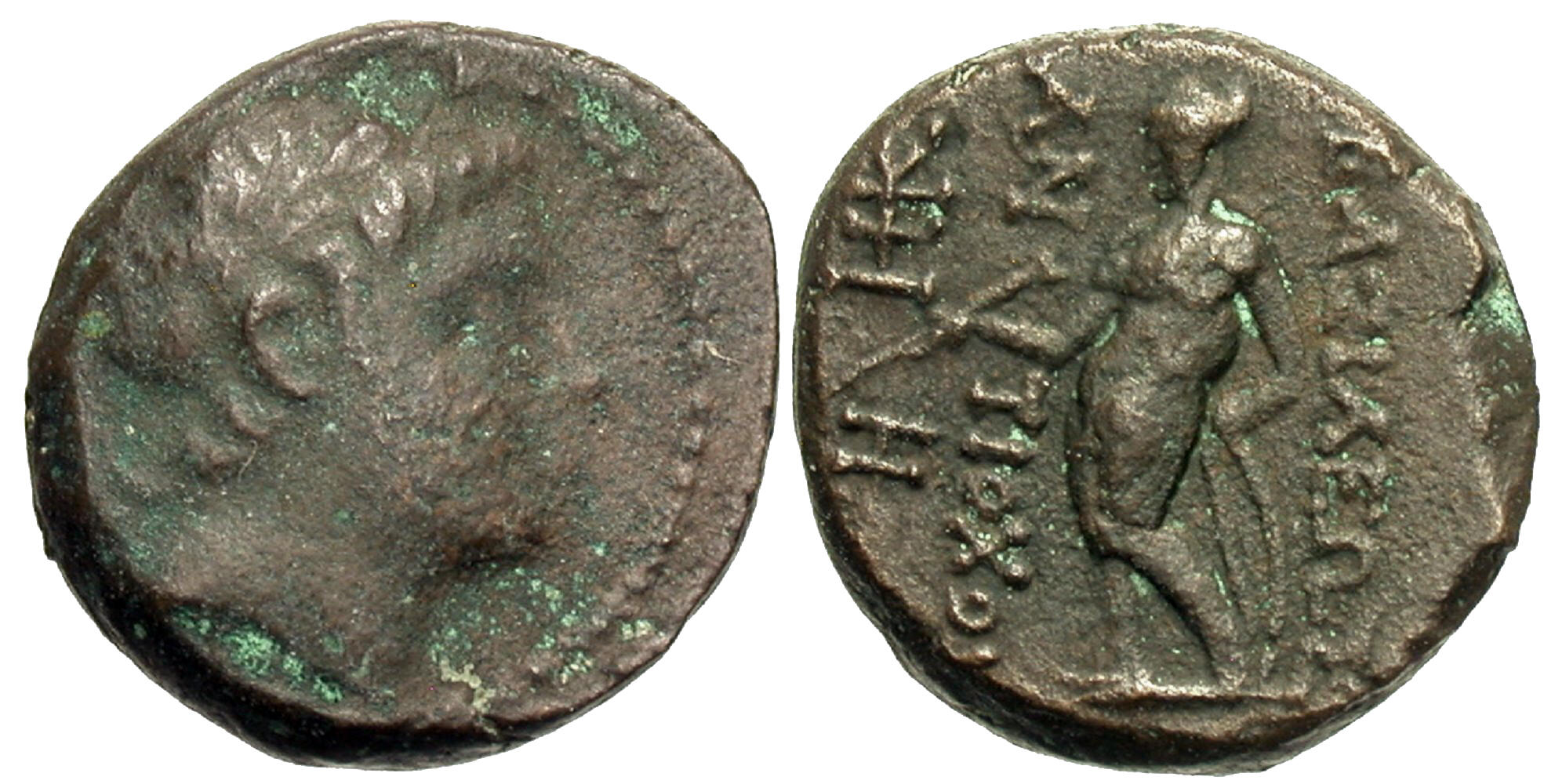215 BCE - 213 BCE | ΒΑΣΙΛΕΩΣ ΑΝΤΙΟΧΟΥ
Overstriking coin
SO 1168 - Sardis? over uncertain mint.jpg
Overstruck variety
Antiochos_Apollo_arrow_(under_Antiochus_Sardes).jpg
[1]
|
|
Sale(s)Sale(s) ᵖ:
|
Ebay Forum Ancientcoins, n° GB62949
|
|
|
|
Description
| ObverseInscription or printing placed on the obverse.:
|
Head of Apollo right, wearing laurel wreath.
|
ReverseInscription or printing placed on the reverse.:
|
ΒΑΣΙΛΕΩΣ ΑΝΤΙΟΧΟΥ (Greek) Tripod.
|
Mint and issuing power
Chronology
| FromIdentifies the initial date in a range assigned in a numismatic context. 215 BCE toIdentifies the final date in a range assigned in a numismatic context.. 213 BCE
|
Hellenistic 323-30 BC  periodTime period of the numismatic object. periodTime period of the numismatic object.
|
Physical description
MetalThe physical material (usually metal) from which an object is made.: Bronze 
|
WeightWeight of the numismatic object (in grams). in grams: 12.2812.28 g <br />12,280 mg <br />
|
|
AxisDescribes the directional relationship between the obverse and reverse of a numismatic object.: 1212 mm <br />1.2 cm <br />
|
| DiameterDescribes diameter of an object (in mm).: 26.426.4 mm <br />2.64 cm <br />
|
|
References
Description
| ObverseInscription or printing placed on the obverse.:
|
Head of Apollo right, wearing laurel wreath.
|
ReverseInscription or printing placed on the reverse.:
|
BAΣIΛEΩΣ ANTIOXOY (Greek) Apollo standing left, nude, holding arrow and resting on grounded bow.
|
Mint and issuing power
Chronology
| FromIdentifies the initial date in a range assigned in a numismatic context. 262 BCE toIdentifies the final date in a range assigned in a numismatic context.. 213 BCE
|
Hellenistic 323-30 BC  periodTime period of the numismatic object. periodTime period of the numismatic object.
|
Physical description
References
| Frequency of overstrikesFrequency of overstrikes:
|
rare and spread
|
Level of confidenceLevel of confidence of the identification:
|
|
| RemarksRemarks:
|
"undertype is also laureate head of Apollo right; reverse BAΣIΛEΩΣ ANTIOXOY, tripod lebes, no control symbols, undertype obscure but likely Apollo standing left, examining arrow in right, resting left on grounded bow behind"
|
References
- ^ Newell, Edward T. (1941), The coinage of the western Seleucid mints from Seleucus I to Antiochus III, Numismatic Studies 4, New York, 450 p., LXIV pl.
- ^ Hoover, Oliver D. (2009), Handbook of ancient Syrian coins : royal and civic issues, fourth to first centuries BC, The Handbook of Greek Coinage 9, Lancaster, lxix, 332 p.
- ^ Houghton, Arthur - Lorber, Catharine (2002), Seleucid coins : a comprehensive catalogue. Part 1, Seleucus I through Antiochus III, New York - Lancaster - London, 2 v. (xxxviii, 488 p. + 300 p.), 101 pl.


